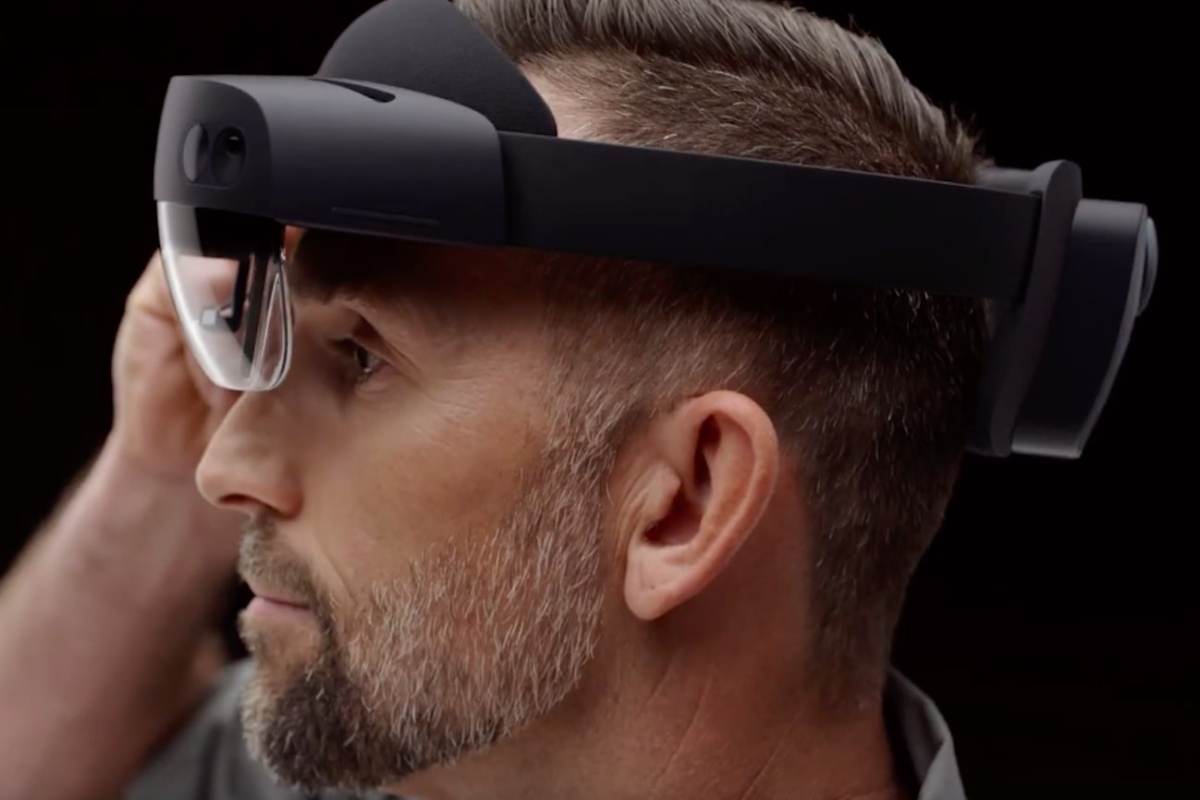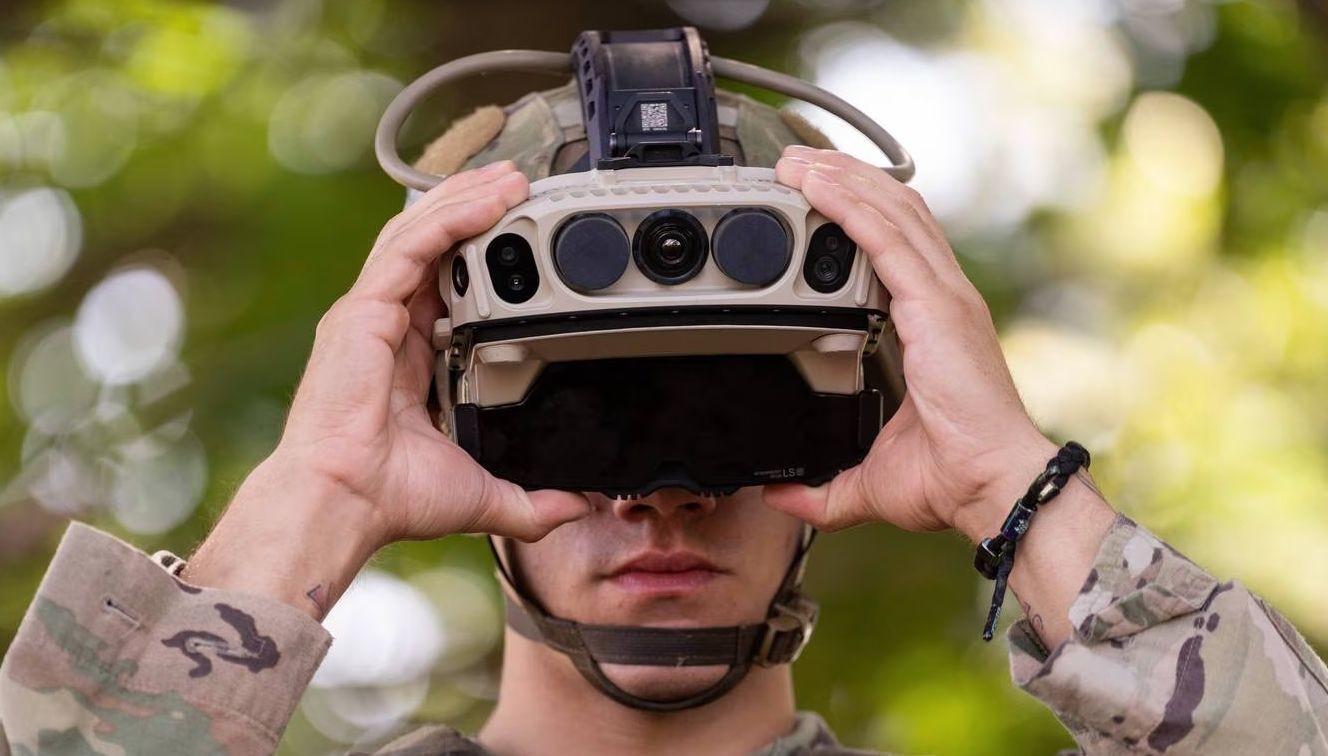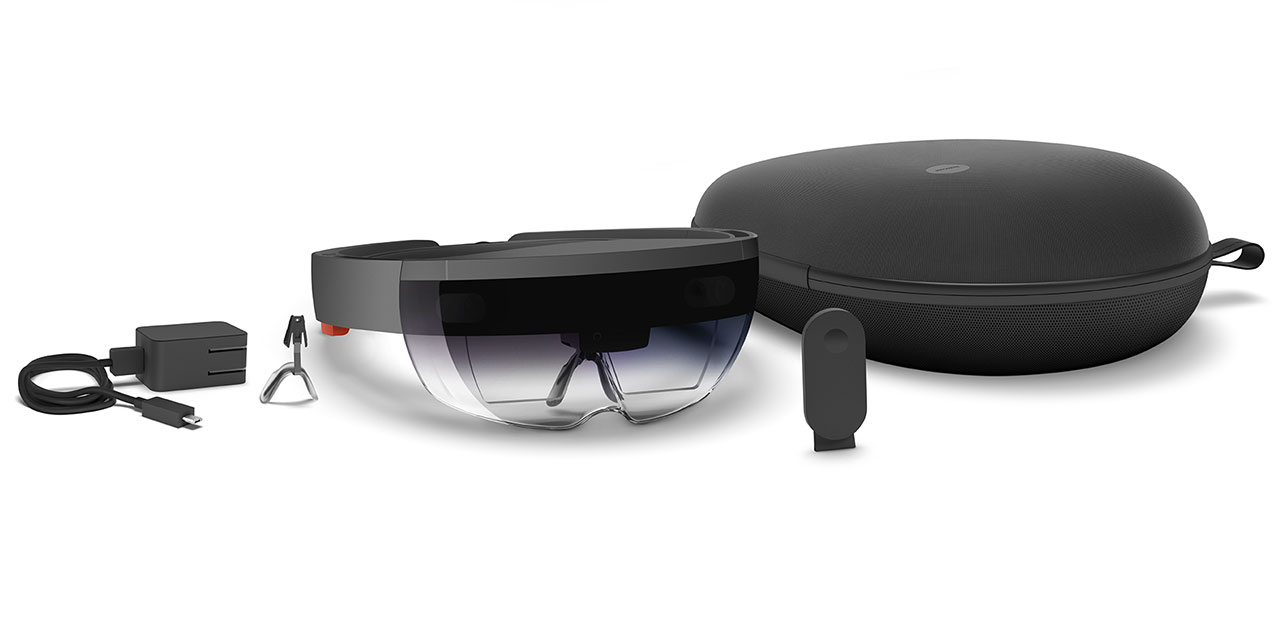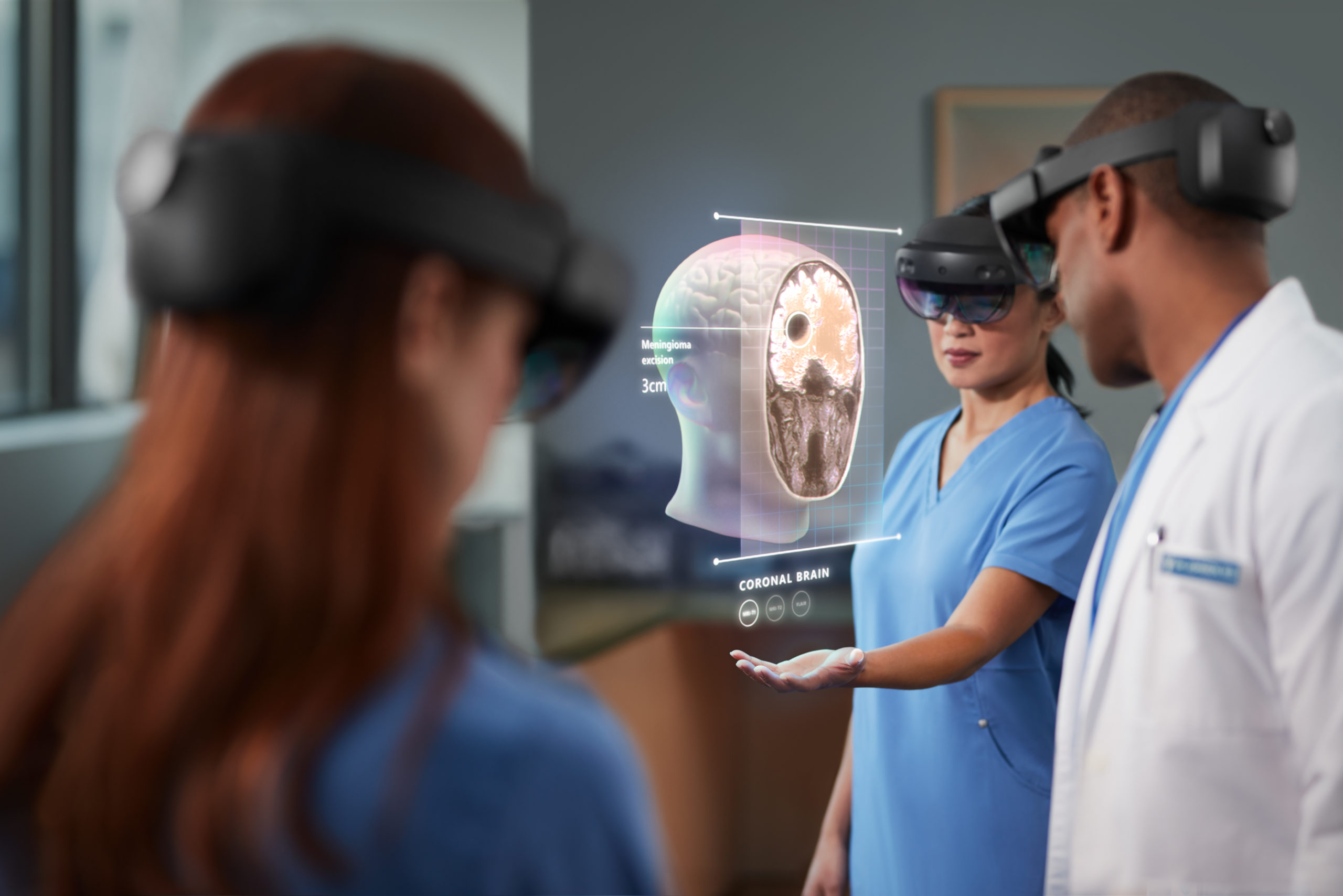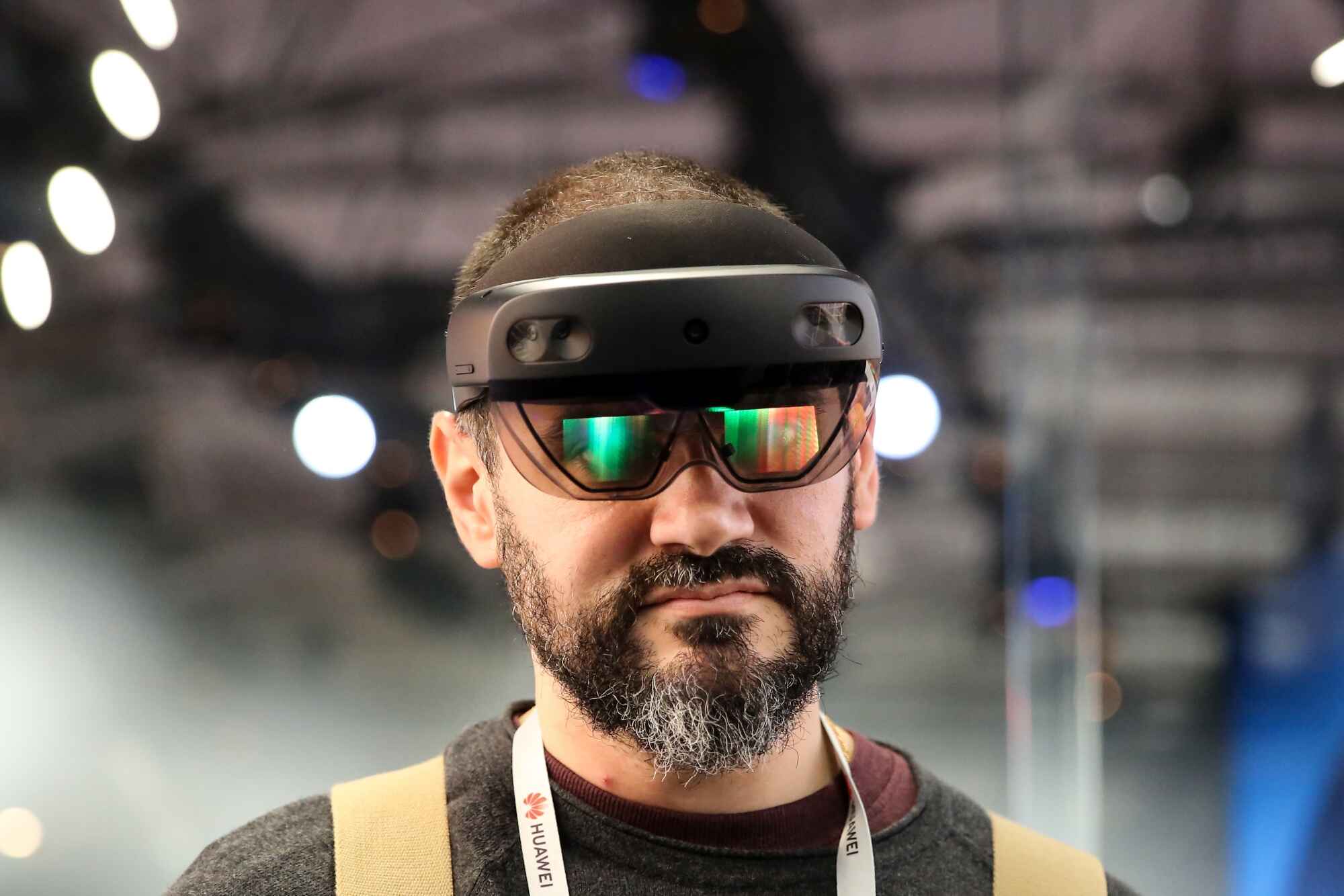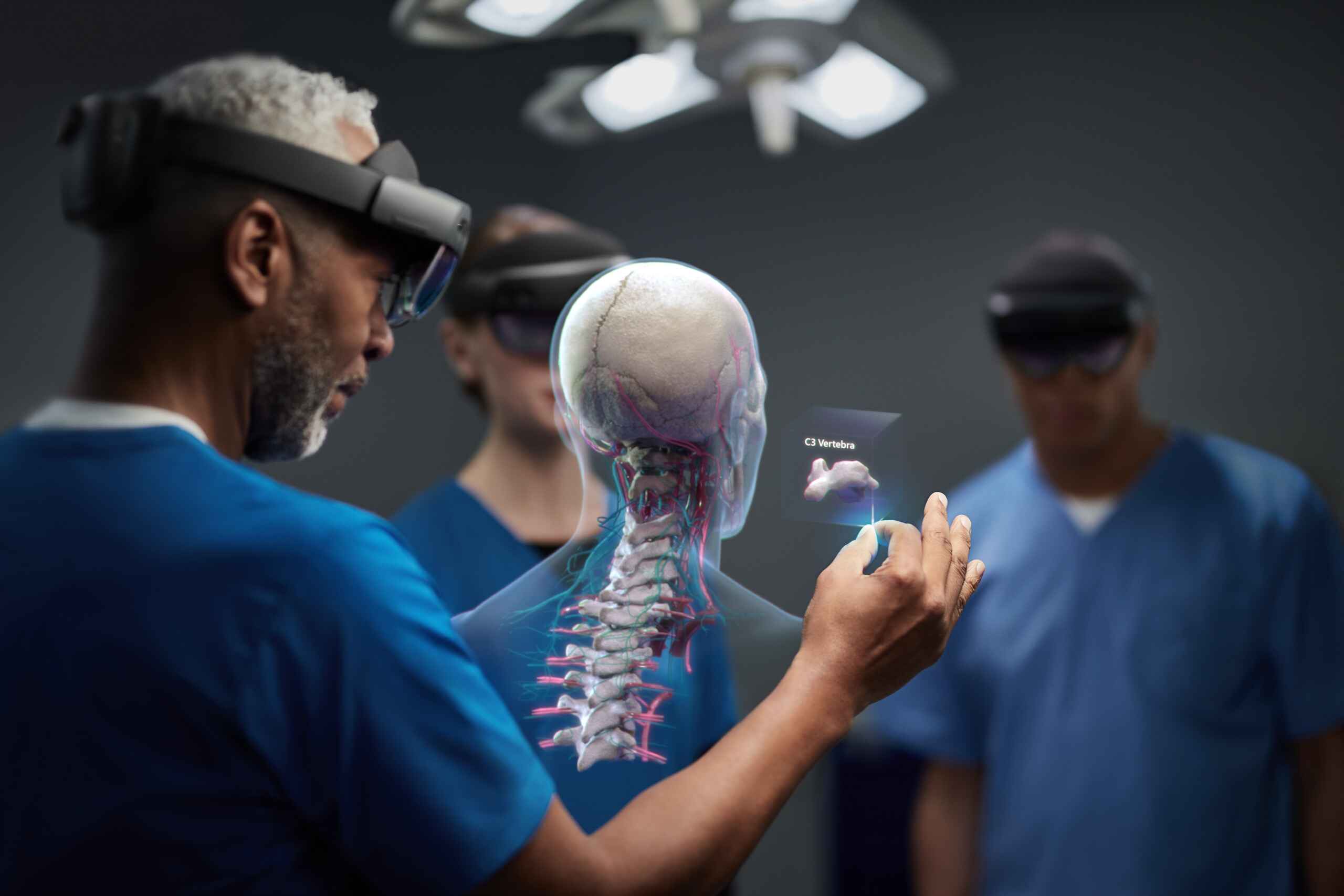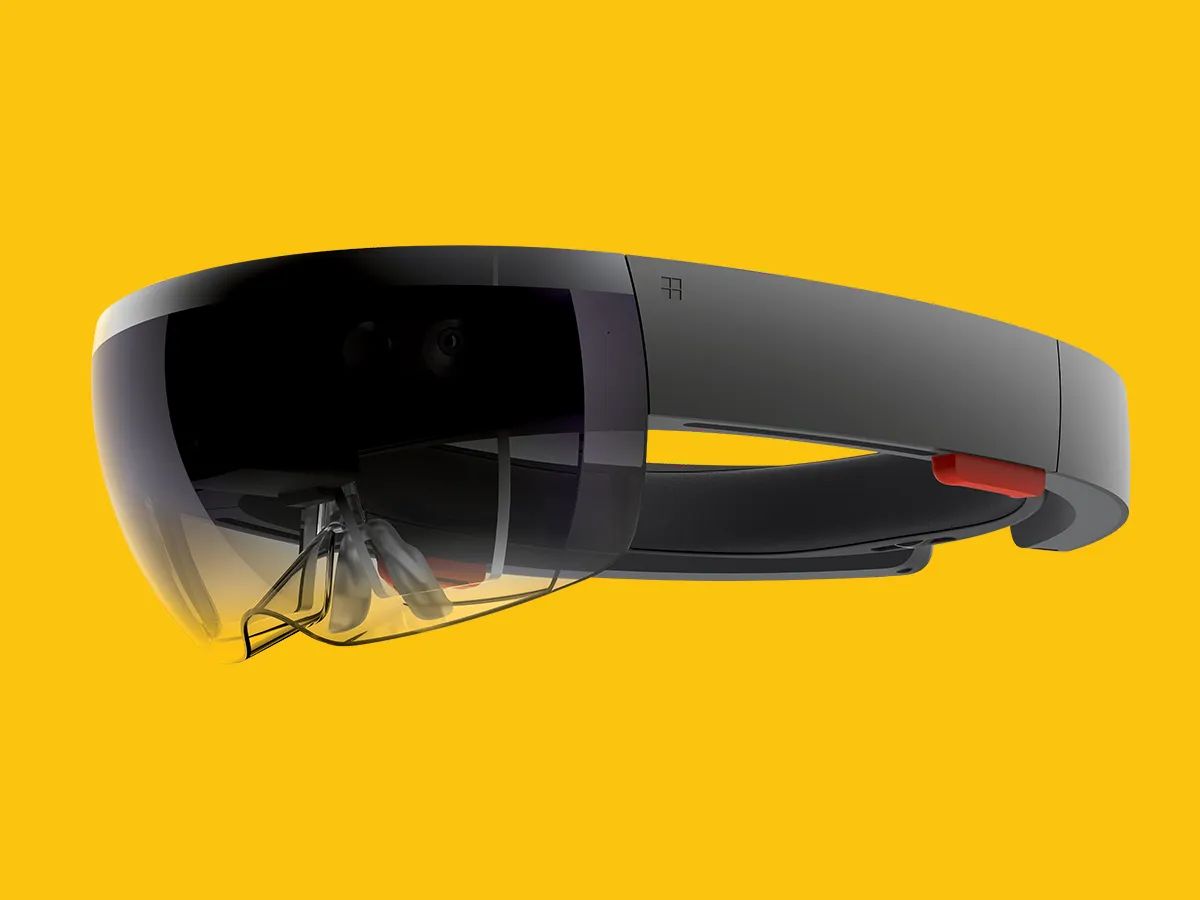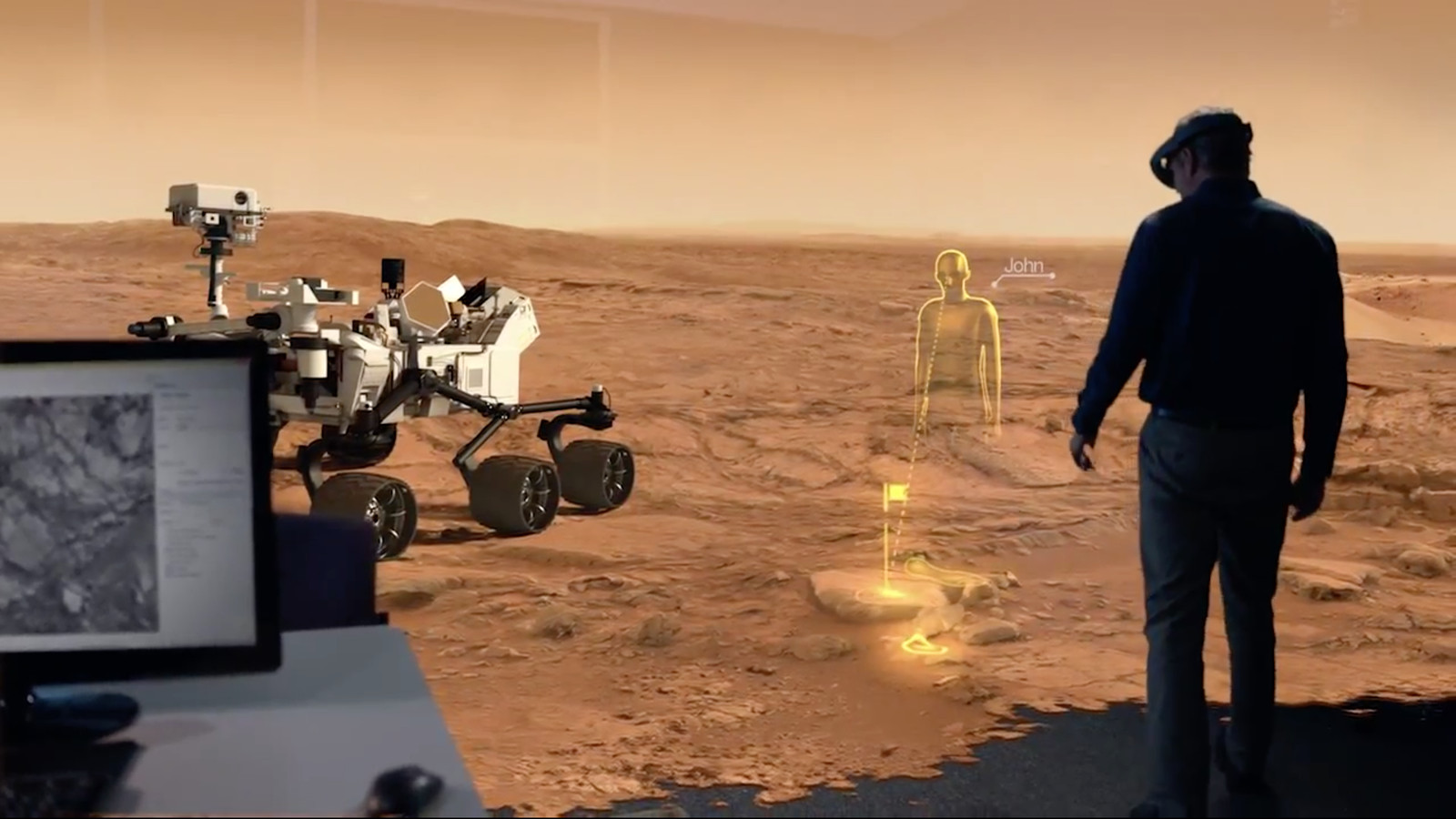Introduction
Microsoft’s Hololens is a revolutionary technology that has the potential to change the way we interact with the world around us. It combines the power of augmented reality (AR) with cutting-edge hardware and software to create a truly immersive and interactive experience. Unlike virtual reality, which fully immerses the user in a digital environment, Hololens overlays holographic images onto the real world, blending the physical and digital realms seamlessly.
With its advanced sensors, cameras, and processing capabilities, Hololens is able to map the environment and track the user’s movements in real time. This allows users to interact with virtual objects in a natural and intuitive way, without the need for cumbersome controllers or external devices. Whether it’s exploring distant planets, designing complex architectural structures, or learning through interactive simulations, Hololens opens up a world of possibilities across a wide range of industries and applications.
This article will delve into the various applications of Hololens and how it is set to revolutionize different sectors. From education to healthcare, architecture to entertainment, and manufacturing to engineering, Hololens is transforming the way we learn, work, and play. By providing a seamless blend of virtual and physical reality, Hololens has the potential to revolutionize communication, collaboration, and productivity, ushering in a new era of technological advancement.
Throughout this article, we will explore the intricacies of Hololens, its underlying technology, and the incredible impact it stands to make in diverse fields. By understanding the capabilities and potential of Hololens, we can gain a deeper appreciation for the future of augmented reality and its ability to reshape our world.
What is Microsoft’s Hololens?
Microsoft’s Hololens is a groundbreaking wearable device that brings augmented reality (AR) to life. It is essentially a headset that resembles a pair of glasses, but instead of providing a regular optical display, it overlays 3D holographic images onto the user’s surrounding environment. This allows users to see and interact with virtual objects as if they were part of the real world.
The Hololens device is equipped with advanced sensors, cameras, and a powerful processor, which work together to understand and map the user’s physical environment. This enables the device to accurately track the user’s movements and spatial positioning, facilitating a highly immersive and interactive AR experience.
Unlike virtual reality (VR), which completely replaces the real world with a digital environment, Hololens provides a mixed reality experience. It blends the physical and virtual worlds together, allowing users to still see and interact with their real surroundings while simultaneously perceiving and interacting with virtual content.
This unique ability of Hololens opens up a wide range of possibilities, as it allows for the seamless integration of virtual objects and information into our everyday lives. Whether it’s overlaying step-by-step instructions onto physical objects, visualizing architectural designs in real-world settings, or even collaborating with remote colleagues by projecting their holograms into your environment, Hololens is poised to revolutionize how we interact with technology.
One of the key elements that sets Hololens apart from other AR devices is its ability to recognize gestures and voice commands. Users can navigate through menus, manipulate virtual objects, and control various functions simply by using hand gestures or speaking commands. This intuitive and natural interaction with the virtual content enhances the overall user experience and makes it feel more seamless and immersive.
The potential applications for Hololens are vast and diverse. From education to healthcare, architecture to entertainment, and manufacturing to engineering, the technology can be leveraged to transform and improve various industries. In the following sections, we will explore some of the specific applications where Hololens is set to make a significant impact.
How Does It Work?
Microsoft’s Hololens utilizes a sophisticated combination of hardware and software to create its immersive augmented reality experience. At the core of the device, there are three key components: sensors, optics, and a holographic processing unit (HPU).
The sensors embedded in the Hololens include an inertial measurement unit (IMU), multiple cameras, and depth sensors. These sensors work together to map the user’s physical environment in real time. They track the user’s head movements, position, and gestures, allowing the device to understand the user’s perspective and provide accurate holographic overlays.
The optics of the Hololens are responsible for delivering the holographic images to the wearer’s eyes. The device uses a combination of waveguides and projectors to display the virtual content, ensuring that it is properly aligned with the user’s real-world surroundings. The optics also enable the user to see through the headset, maintaining a clear view of the physical environment while superimposing virtual objects and information.
The holographic processing unit (HPU) is the brain of the Hololens. It processes the data from the sensors and generates the holographic images in real time. The HPU combines data from the sensors with pre-existing spatial mapping information to create a precise and accurate holographic overlay. This enables the user to interact with virtual objects as if they were physically present in their environment.
Furthermore, the software behind Hololens plays a crucial role in delivering a seamless and immersive augmented reality experience. Microsoft has developed the Windows Holographic platform, which provides developers with the tools and APIs to create holographic applications for Hololens. These applications can range from simple games and simulations to complex enterprise solutions.
In addition to the hardware and software components, Hololens relies on cloud computing to enhance its capabilities. By leveraging the power of the cloud, the device can offload complex computations and generate more sophisticated and realistic holographic experiences.
Overall, the combination of sensors, optics, the holographic processing unit, and software integration allows Hololens to create a truly immersive augmented reality experience. Users can interact with virtual content seamlessly integrated into their physical environment, opening up a world of possibilities for various industries and applications.
Applications in Education
Microsoft’s Hololens has the potential to revolutionize the field of education by offering immersive and interactive learning experiences. It enables students to explore and interact with virtual objects and scenarios, bringing abstract concepts to life and enhancing their understanding of complex subjects.
One of the key applications of Hololens in education is in the field of science. Students can embark on virtual expeditions and explore different ecosystems, observe the behavior of animals, and dissect virtual specimens. This hands-on approach provides a deeper understanding of scientific principles and encourages curiosity and engagement among students.
In addition, Hololens can be used to recreate historical events and places, allowing students to virtually step into significant moments in history. They can witness the construction of ancient structures, walk through virtual museums, and even interact with historical figures through holograms. This experiential learning promotes a deeper connection to the past and makes history come alive.
The technology of Hololens also has the potential to revolutionize the field of anatomy and medical education. Students studying medicine can visualize and interact with 3D models of the human body, exploring the intricacies of organs and systems. This immersive learning experience can enhance the understanding of complex anatomical structures and improve surgical training.
Furthermore, Hololens can facilitate collaborative learning by enabling students to work together on virtual projects and simulations. Students can collaborate in real time, manipulating virtual objects and sharing ideas, regardless of their physical location. This fosters teamwork, communication skills, and prepares students for the collaborative work environments they will encounter in their future careers.
Moreover, Hololens can also cater to students with special educational needs. The device can provide tailored and interactive learning experiences, accommodating different learning styles and engaging students with diverse abilities. It can offer visual and auditory cues, adaptive content, and personalized instruction, creating a more inclusive and accessible education environment.
With its ability to bridge the gap between the physical and virtual worlds, Hololens opens up a new realm of possibilities for education. It enables educators to create engaging and interactive lessons, encourages active participation from students, and enhances the overall learning experience.
Applications in Healthcare
The applications of Microsoft’s Hololens in the healthcare industry are vast and promising. It has the potential to revolutionize patient care, medical education, and surgical procedures, ultimately improving the overall healthcare experience.
One of the key applications of Hololens in healthcare is in surgical planning and navigation. Surgeons can use the device to overlay virtual images, such as CT scans or MRI data, onto a patient’s body during pre-operative planning. This allows for a more precise understanding of the patient’s anatomy, facilitating accurate surgical incisions and reducing risks during complex procedures.
During surgical procedures, Hololens can provide real-time guidance and assistance to surgeons. By superimposing vital patient information, such as heart rate, blood pressure, or oxygen levels, directly into the surgeon’s field of view, the device improves situational awareness and allows for more informed decision-making. It can also enable the surgeon to visualize and interact with 3D models of the patient’s organs, enhancing precision and minimizing risks during the operation.
Another significant application of Hololens in healthcare is in medical education and training. Medical students can utilize the device to practice virtual surgeries or perform simulations, allowing for a more hands-on and interactive learning experience. This immersive training can improve surgical skills, promote better decision-making, and ultimately enhance patient outcomes.
Hololens can also facilitate remote collaboration and consultation among healthcare professionals. Specialists can project their holographic presence into another location, providing real-time guidance and expertise to healthcare providers in remote areas or during emergency situations. This capability can significantly improve access to specialized healthcare and enhance the quality of care for patients in underserved communities.
Moreover, Hololens can be used to improve patient engagement and education. Healthcare providers can present medical information and treatment plans in a more visual and interactive manner, helping patients better understand their conditions and make informed decisions about their care. The device can also be utilized for pain management, distraction therapy, and rehabilitation exercises, enhancing the patient experience and speeding up recovery.
With its ability to merge virtual information with the real world, Hololens has the potential to transform healthcare by improving surgical precision, enhancing medical education, facilitating remote collaboration, and providing an enhanced patient experience.
Applications in Architecture and Design
Microsoft’s Hololens is poised to revolutionize the field of architecture and design by offering immersive and interactive experiences that enhance the design process, improve collaboration, and streamline communication between stakeholders.
One of the key applications of Hololens in architecture and design is in the process of conceptualizing and visualizing architectural projects. Designers and architects can use the device to create holographic models of buildings and structures, allowing them to view and interact with virtual designs in real-world settings. This enables designers to assess the scale, proportions, and spatial relationships of their designs before construction even begins, leading to more informed decision-making and better design outcomes.
With Hololens, architects can also showcase their designs to clients and stakeholders in a more immersive and engaging manner. Instead of traditional 2D drawings or physical models, architects can present holographic representations of their designs, allowing clients to experience and explore the proposed spaces in a more realistic and interactive way. This enhances communication and understanding between designers and clients, reducing the chances of miscommunication and ensuring that everyone is on the same page.
In addition, Hololens can facilitate collaboration among designers, architects, and other stakeholders involved in the design process. Multiple users can wear Hololens devices and view and manipulate the virtual models simultaneously, regardless of their physical location. This enables real-time collaboration and feedback, enhancing teamwork and efficiency in the design process.
Hololens also holds great potential for interior design. Designers can use the device to overlay virtual furniture, materials, and finishes onto existing spaces, allowing clients to see how different design elements will look and feel in their actual environments. This facilitates better decision-making, as clients can visualize and make informed choices about interior design elements before any physical changes are made.
Furthermore, Hololens can be used to assist in the construction phase of architectural projects. Construction workers can use the device to overlay virtual plans and measurements onto a construction site, ensuring accurate placement of structural elements and reducing errors. This helps streamline the construction process, improve efficiency, and save costs.
Overall, Hololens has the potential to revolutionize the architecture and design industry by providing immersive and interactive experiences that enhance the design process, improve collaboration, and enable better communication between stakeholders.
Applications in Entertainment and Gaming
Microsoft’s Hololens is set to transform the world of entertainment and gaming by providing immersive and interactive experiences that blur the lines between the virtual and physical worlds. With its augmented reality capabilities, Hololens opens up a new realm of possibilities, not only for traditional gaming but also for immersive storytelling, interactive experiences, and social interactions.
One of the key applications of Hololens in entertainment and gaming is in the realm of augmented reality games. Hololens allows players to interact with virtual objects and characters in their real-world environment, turning their surroundings into a virtual playground. Whether it’s battling virtual enemies in their living room or solving puzzles that are integrated into the physical space around them, players can experience a whole new level of immersion and engagement.
In addition to gaming, Hololens can revolutionize the way we consume and experience entertainment content. The device can overlay holographic elements onto live performances, creating a multi-dimensional experience for audiences. Musicians, actors, and performers can integrate virtual elements into their live shows, offering audiences a unique and immersive experience. It can also redefine the way we watch movies and TV shows, by placing virtual screens in our field of vision, offering a personalized and immersive viewing experience.
Hololens also enables interactive storytelling experiences. Users can become active participants in the story, engaging with virtual characters and making choices that impact the narrative. This creates a more personalized and engaging storytelling experience, blurring the lines between fiction and reality.
Furthermore, Hololens has the potential to revolutionize social interactions in the gaming and entertainment industry. Players can interact with each other’s avatars in their physical environment, allowing for a more immersive and social gaming experience. Hololens can also facilitate virtual meetings, gatherings, and collaborations, allowing people to connect in a virtual space regardless of their physical location.
Another exciting application is the integration of Hololens with theme parks and attractions. Imagine walking through a theme park and seeing virtual characters and elements overlaid onto the physical environment, creating an interactive and immersive experience. Hololens can enhance theme park rides, museum exhibits, and other entertainment attractions, taking the visitor experience to new heights.
In summary, Hololens opens up a world of possibilities in the fields of entertainment and gaming. From augmented reality gaming experiences to immersive storytelling, interactive performances, and social interactions, Hololens is set to revolutionize how we consume and engage with entertainment content.
Applications in Manufacturing and Engineering
Microsoft’s Hololens has the potential to greatly impact the field of manufacturing and engineering by providing innovative solutions that enhance productivity, improve training and safety procedures, and streamline complex processes.
One of the key applications of Hololens in manufacturing and engineering is in the realm of product design and prototyping. Engineers can utilize the device to create virtual 3D models of their designs and view them in a physical environment. This allows for a more accurate assessment of the design and helps identify any potential issues or improvements before the manufacturing process begins. Hololens can also enable engineers to collaborate and make real-time adjustments to the digital prototypes, reducing the time and cost associated with physical prototypes.
During the manufacturing process, Hololens can aid in assembly and quality control procedures. Assembly workers can use the device to overlay step-by-step instructions and visual cues onto the physical components, ensuring accurate and efficient assembly. The device can also provide real-time feedback, highlighting any discrepancies or errors, reducing production errors and increasing overall efficiency.
In addition, Hololens can improve training and safety procedures in manufacturing and engineering industries. New employees can use the device to receive interactive and immersive training, allowing them to practice procedures and learn in a realistic virtual environment. The device can also overlay safety instructions and warnings, reducing the risk of accidents and promoting a safe working environment.
Furthermore, Hololens can assist in maintenance and repair tasks. Technicians can utilize the device to access digital manuals, diagrams, and step-by-step instructions, enhancing their ability to troubleshoot and fix issues efficiently. This can reduce downtime and eliminate the need for experts to be physically present at the location, improving overall maintenance efficiency.
Hololens also has the potential to revolutionize the field of remote collaboration in manufacturing and engineering. Experts can project their holographic presence into a remote location, providing real-time guidance and support to field technicians. This capability can save time and costs associated with travel and enable efficient troubleshooting and problem-solving, regardless of geographical constraints.
Overall, Hololens has the potential to transform the manufacturing and engineering industries by improving design processes, enhancing assembly and quality control procedures, providing immersive training experiences, increasing safety measures, and enabling remote collaboration and troubleshooting.
Implications for Communication and Collaboration
Microsoft’s Hololens has the potential to revolutionize communication and collaboration by bridging physical distances and enhancing virtual interactions. With its augmented reality capabilities, Hololens opens up new possibilities for remote collaboration, immersive meetings, and seamless communication across various industries.
One of the key implications of Hololens in communication and collaboration is the ability to connect and interact with others in a virtual space. Users can project their holographic presence into a shared virtual environment, allowing for more immersive and engaging discussions. This virtual space can be customized to suit specific needs, whether it’s a virtual boardroom for business meetings or a collaborative environment for design reviews and brainstorming sessions.
Hololens enables remote collaboration, breaking down geographical barriers and bringing people together regardless of their physical location. Users wearing Hololens can see and interact with shared virtual objects, enabling real-time collaboration on projects, designs, and simulations. This promotes teamwork and increases productivity by facilitating seamless communication and avoiding the limitations of traditional video conferencing.
The device also offers the potential for remote assistance and support. Experts can project their holographic presence into a remote location and guide on-site personnel through complex tasks or troubleshooting procedures. This not only saves time and costs associated with travel but also ensures efficient problem-solving and real-time assistance, even in challenging or hazardous environments.
Furthermore, Hololens has the potential to enhance communication and collaboration among multidisciplinary teams. Professionals from different fields can come together in a virtual space, exchange ideas, and collaborate on projects. The ability to visualize and manipulate virtual objects and data in real-time enhances understanding and fosters better decision-making, regardless of the participants’ physical locations.
In the realm of education and training, Hololens can enable collaborative learning experiences. Students wearing Hololens devices can work on virtual projects together, interact with virtual models, and share ideas, regardless of their physical location. This promotes teamwork, enhances engagement, and prepares students for the collaborative work environments they will encounter in their future careers.
Overall, Hololens has the potential to transform communication and collaboration by providing immersive and interactive experiences that break down geographical barriers, enhance virtual interactions, and foster seamless collaboration among individuals and teams from different locations and disciplines.
Conclusion
Microsoft’s Hololens is a groundbreaking technology that has the potential to transform various industries and reshape the way we interact with the world around us. Through its augmented reality capabilities, Hololens enables immersive and interactive experiences that bridge the gap between the physical and virtual realms.
In the fields of education and healthcare, Hololens offers innovative solutions that enhance learning experiences, improve medical training, and facilitate remote collaboration among professionals. The device provides students with interactive and immersive learning experiences, allowing them to explore and understand complex subjects in a more engaging and tangible way. In the healthcare industry, Hololens improves surgical planning, facilitates remote consultations, and enhances patient education and engagement.
In the architecture and design sectors, Hololens revolutionizes the design process, allowing architects to visualize and interact with 3D models of their designs in real-world environments. It enables better communication between designers and clients, enhances collaboration among team members, and improves the overall design outcomes.
In the entertainment and gaming industry, Hololens creates immersive and interactive experiences by blending virtual elements with the physical world, enhancing gaming experiences, and redefining how we consume and experience entertainment content. It opens up new possibilities for augmented reality gaming, interactive storytelling, and social interactions.
In manufacturing and engineering, Hololens enhances productivity, improves training procedures, and facilitates remote collaboration. It revolutionizes product design and prototyping processes, streamlines assembly and quality control procedures, and provides immersive training experiences. The device also enables remote collaboration and troubleshooting, saving time and costs associated with travel and enabling efficient problem-solving.
Furthermore, Hololens has implications for communication and collaboration by breaking geographical barriers and enabling immersive virtual interactions. It facilitates remote collaboration and communication, enhances virtual meetings, and enables seamless interaction and collaboration among individuals and teams from different locations and disciplines.
In conclusion, Microsoft’s Hololens has the potential to transform industries and revolutionize the way we learn, work, and play. With its augmented reality capabilities, it merges the physical and virtual worlds, providing immersive and interactive experiences that enhance productivity, improve learning outcomes, foster collaboration, and unlock new possibilities across various sectors. As Hololens continues to evolve and gain more widespread adoption, we can expect to see even more groundbreaking applications and advancements in the realm of augmented reality.







